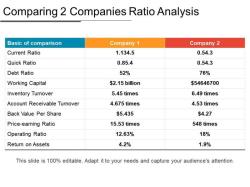How to figure out interest rate calculator?
To figure out an interest rate using a calculator, you'll need to know at least three of the following four variables: principal amount, interest accrued, time period, and the resulting interest rate. Here's a step-by-step guide on how to use and interpret an interest rate calculator:
Enter Known Variables: Input the known values into the calculator. For instance:
- Principal Amount: The initial amount borrowed or invested.
- Interest Accrued: The total interest earned or paid.
- Time Period: The duration for which interest was calculated (in years or months).
Select the Calculation Method: Depending on the calculator, there might be different methods available for calculating interest rates. Some calculators offer options for simple interest, compound interest, annual percentage rate (APR), etc. Choose the appropriate calculation method for your scenario.
Calculate Interest Rate: Once you've entered the known variables and selected the appropriate calculation method, the calculator will solve for the unknown interest rate. It will display the computed interest rate based on the information provided.
Interpret Results: The calculated interest rate displayed by the calculator is the rate at which interest accrued or was paid over the specified time period. Verify that the result aligns with your expectations based on the provided information.
Adjustments and Recalculation: If necessary, adjust the known variables and recalculate to verify different scenarios or to ensure accuracy.
Keep in mind that different types of interest (simple, compound, etc.) and different compounding frequencies (annual, monthly, daily) can affect how interest is calculated. Ensure that the calculator settings align with the specific terms and conditions of the loan or investment for accurate results.
Interest rate calculators are valuable tools for financial planning, loan comparisons, investment decisions, and understanding the costs or returns associated with borrowing or investing money. Always double-check the inputs and results to ensure accuracy in your calculations.
1. Steps to Use an Interest Rate Calculator
Interest rate calculators are handy tools that can help you calculate the interest earned or paid on a loan, investment, or savings account. Here's a step-by-step guide on how to use an interest rate calculator:
Step 1: Gather the necessary information
Before you start using the calculator, ensure you have the following information:
Principal amount: The initial amount of money involved in the calculation.
Interest rate: The annual percentage rate (APR) or monthly percentage rate (MPR) used to calculate the interest.
Time period: The duration for which the interest is calculated, typically in years or months.
Compounding frequency: How often interest is compounded, such as daily, monthly, or annually.
Step 2: Choose the appropriate calculation method
Interest rate calculators offer various calculation methods, including:
Simple interest: Calculates interest based on the principal amount and time period, assuming interest is not added to the principal.
Compound interest: Calculates interest on both the principal and accumulated interest, leading to higher interest earnings over time.
Future value: Calculates the total amount accumulated at the end of the investment period, including principal and interest.
Present value: Calculates the initial amount that needs to be invested today to reach a specific future value at the end of the investment period.
Step 3: Input the values into the calculator
Once you've chosen the appropriate calculation method, enter the required values into the calculator. Most calculators will have designated fields for each parameter, making it easy to input the information.
Step 4: Calculate and interpret the results
Click on the "Calculate" or "Compute" button to obtain the results. The calculator will display the calculated interest amount, future value, or present value, depending on the method chosen.
2. Impact of Different Interest Calculation Methods
Different interest calculation methods can significantly impact the final result in financial calculations. The choice of method depends on the specific scenario and the desired outcome.
Simple Interest vs. Compound Interest
Simple interest involves straightforward calculations and assumes interest is not added to the principal. This method is often used for short-term investments or loans.
Compound interest, on the other hand, accounts for the growth of interest on both the principal and accumulated interest, leading to a higher overall return over time. This method is commonly used for long-term investments, such as retirement savings or mortgages.
Future Value vs. Present Value
Future value calculations determine the total amount accumulated at the end of the investment period, considering both principal and interest. This method is useful for planning future goals or estimating the potential returns of an investment.
Present value calculations determine the initial amount that needs to be invested today to reach a desired future value at the end of the investment period. This method is helpful for budgeting and determining the upfront investment required to achieve specific financial goals.
In summary, the choice of interest calculation method depends on the specific financial scenario and the desired outcome. Simple interest is suitable for short-term calculations, while compound interest is preferable for long-term investments. Future value calculations determine the accumulated amount, while present value calculations determine the initial investment needed.











